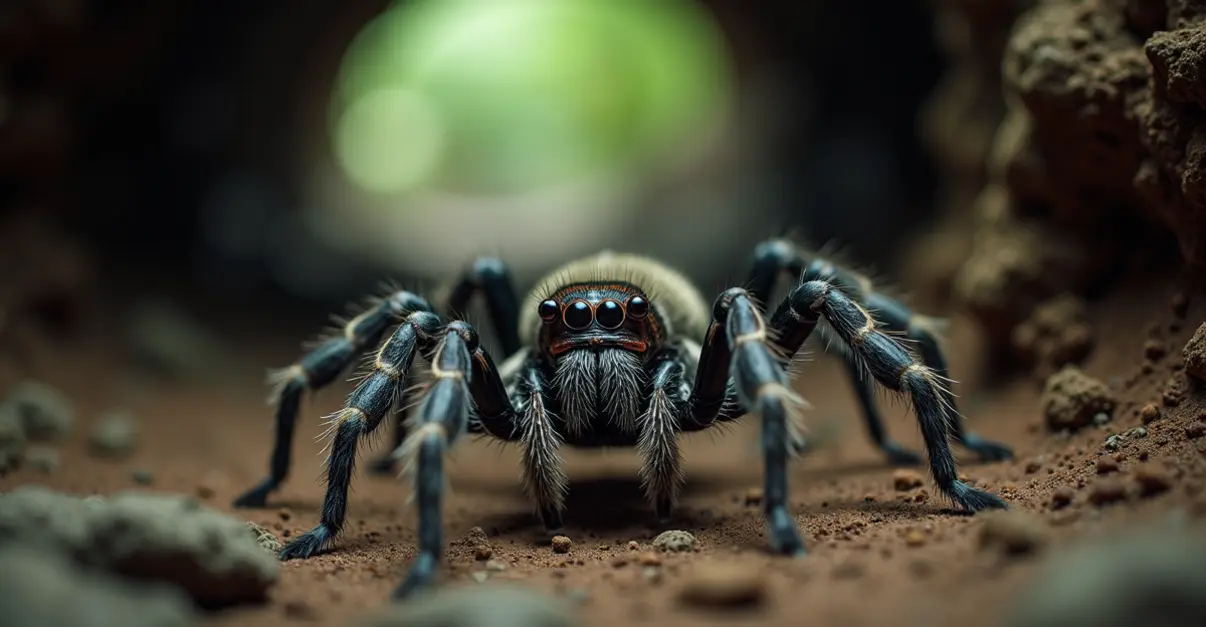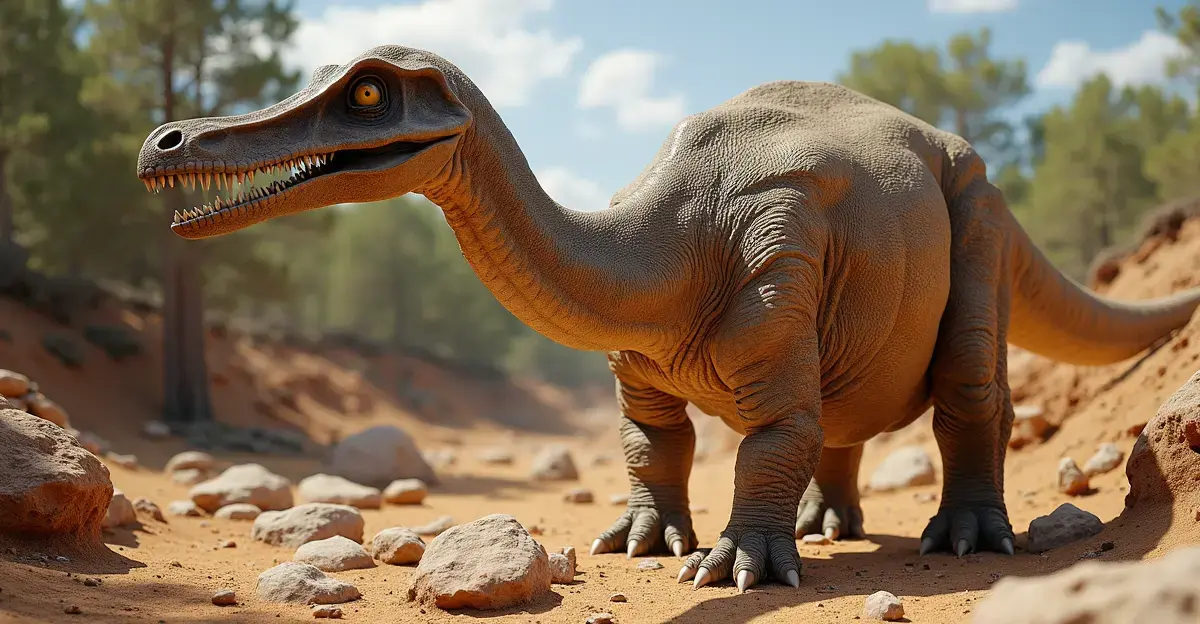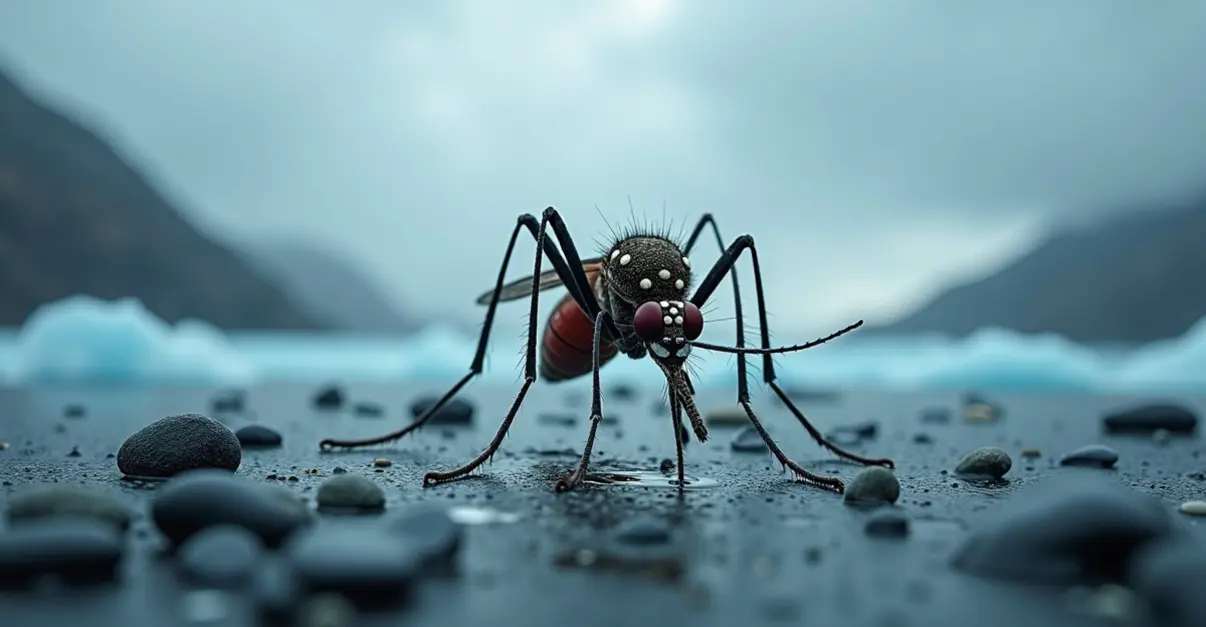Scientists discovered the world's largest spider web in a sulfur cave on the Greece-Albania border, housing over 110,000 spiders from two species living cooperatively in complete darkness.

Massive Arachnid Megacity Discovered on Greece-Albania Border
Scientists have made an extraordinary discovery in a remote sulfur cave straddling the Greece-Albania border - what appears to be the world's largest spider web, spanning over 100 square meters and housing more than 110,000 spiders. This colossal arachnid metropolis represents one of the most remarkable biological discoveries of recent years.
Unprecedented Colonial Behavior
The massive web structure, located deep within Sulfur Cave, consists of thousands of interconnected funnel-shaped webs forming what researchers are calling an arachnid megacity. What makes this discovery particularly groundbreaking is that two typically solitary spider species - the barn funnel weaver (Tegenaria domestica) and the sheetweb spider (Prinerigone vagans) - are living together in unprecedented harmony.
Dr. Elena Vasiliou, lead researcher on the project, expressed her amazement: 'We've never seen anything like this before. These are common house spiders that normally live solitary lives, yet here they've formed a massive cooperative colony of over 110,000 individuals. It completely changes our understanding of spider social behavior.'
Adaptation to Extreme Environment
The spiders have adapted remarkably to their harsh subterranean environment. Located 50 meters from the cave entrance in complete darkness, the colony thrives in conditions that would be lethal to most surface-dwelling species. The cave contains toxic hydrogen sulfide gas and lacks any sunlight, forcing the spiders to evolve unique survival strategies.
Genetic analysis revealed that the cave-dwelling spiders have developed distinct genetic characteristics compared to their surface-dwelling relatives. 'The DNA differences are significant,' noted Dr. Marco Rossi, a geneticist involved in the study. 'These spiders are evolving into a separate population, adapting to their isolated habitat in ways we're only beginning to understand.'
Unique Food Chain Supports Massive Colony
Researchers were particularly fascinated by how such a massive spider population sustains itself in an environment with no access to surface prey. The answer lies in a unique chemoautotrophic ecosystem powered by sulfur-oxidizing microbes.
These microbes form slimy biofilms on cave walls that support dense swarms of non-biting midge flies. The midges, in turn, become trapped in the massive web, providing a continuous food source for the spider colony. 'It's a completely self-contained ecosystem,' explained Dr. Vasiliou. 'The spiders aren't feeding on insects from outside - they're consuming prey that's born and lives entirely within the cave.'
Discovery and Research Timeline
The spider colony was first discovered in 2022 by recreational cavers who reported the extraordinary find to scientific authorities. Researchers then spent three years studying the colony, carefully mapping the web structure and documenting the spiders' behavior.
The research team used advanced genetic sequencing and environmental monitoring to understand how the spiders have adapted to their extreme habitat. Their findings, published in the journal Subterranean Biology, represent a major breakthrough in our understanding of arachnid adaptation and social behavior.
Scientific Significance
This discovery challenges long-held assumptions about spider behavior and adaptation. The fact that two common spider species have developed such sophisticated colonial living arrangements in complete darkness demonstrates the remarkable plasticity of animal behavior.
'This shows us that even species we think we know well can surprise us when placed in extreme environments,' said Dr. Rossi. 'The combination of genetic isolation and abundant food resources appears to have driven these normally solitary spiders to develop cooperative behavior on a scale we've never witnessed before.'
The researchers believe this discovery could have implications for understanding how species adapt to changing environments and may provide insights into evolutionary processes in isolated habitats worldwide.

 Nederlands
Nederlands
 English
English
 Deutsch
Deutsch
 Français
Français
 Español
Español
 Português
Português









